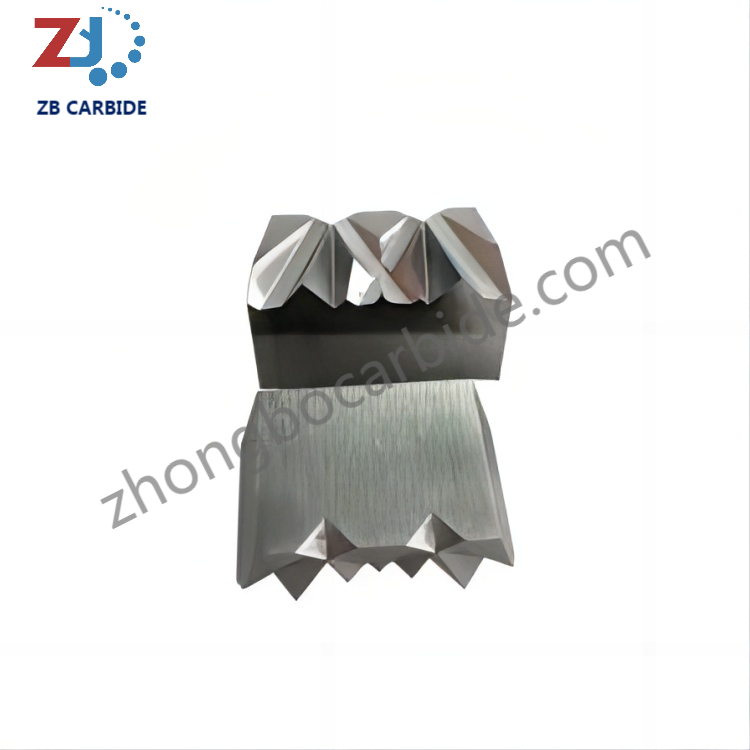In the world of metalworking, precision and efficiency are paramount. Whether it's shaping wire, tubing, or rods, achieving precise dimensions and smooth finishes is essential for producing high-quality metal components. Carbide drawing dies play a crucial role in this process, providing the precision and durability needed to meet the demands of modern metalworking projects. In this blog, we'll explore what carbide drawing dies are, how they work, and the benefits they offer to metalworking projects.
Understanding Carbide Drawing Dies
Carbide drawing dies, also known as tungsten carbide dies, are specialized tools used in the metalworking industry to shape and form metal wire, tubing, and rods. These dies are typically made from a composite material known as tungsten carbide, which is a combination of tungsten and carbon atoms.
Tungsten carbide is prized for its exceptional hardness, wear resistance, and thermal stability, making it an ideal material for drawing dies. Carbide drawing dies are manufactured through a process called powder metallurgy, where powdered tungsten carbide is compacted under high pressure and then sintered at high temperatures to form a dense and durable material.
How Carbide Drawing Dies Work?
Carbide drawing dies are used in a process called wire drawing, which involves pulling a metal wire or rod through a series of progressively smaller dies to reduce its diameter and achieve the desired shape and dimensions. The drawing process is typically performed using a wire drawing machine, which applies tension to the metal stock as it passes through the dies.
During wire drawing, the metal stock is fed into the entrance of the carbide drawing die, where it is gripped by the die and pulled through under controlled tension. As the metal passes through the die, it is forced to conform to the shape of the die's internal bore, resulting in a reduction in diameter and an increase in length.
The precise dimensions and surface finish of the final product are determined by the design of the carbide drawing die and the parameters of the drawing process, including the amount of reduction per pass, the speed of drawing, and the lubrication used.
Benefits of Carbide Drawing Dies in Metalworking Projects
Carbide drawing dies offer several key benefits that make them indispensable tools in the metalworking industry:
●Exceptional Hardness: Tungsten carbide is one of the hardest materials known to man, second only to diamond. This exceptional hardness allows carbide drawing dies to withstand high levels of pressure and abrasion during the wire drawing process, resulting in long-lasting performance and minimal wear.
●Superior Wear Resistance: Carbide drawing dies exhibit excellent wear resistance, meaning they maintain their shape and dimensions even after prolonged use. This ensures consistent and accurate results over the lifespan of the die, reducing the need for frequent replacements and minimizing downtime in metalworking operations.
●Thermal Stability: Tungsten carbide has a high melting point and excellent thermal conductivity, allowing carbide drawing dies to withstand the extreme temperatures generated during the wire drawing process. This thermal stability prevents deformation or cracking of the die, even under the most demanding operating conditions.

●Tight Tolerances: Carbide drawing dies can be manufactured to extremely tight tolerances, allowing for precise control over the dimensions and surface finish of the final product. This level of precision is essential for meeting the strict quality standards of modern metalworking projects, ensuring consistency and uniformity in the finished components.
●Versatility: Carbide drawing dies can be used to shape a wide range of metals, including steel, aluminum, copper, brass, and nickel alloys. This versatility makes carbide drawing dies suitable for a variety of metalworking applications, from automotive and aerospace components to electrical wiring and jewelry making.
●Cost-Effectiveness: While carbide drawing dies may have a higher upfront cost compared to dies made from other materials, their exceptional durability and long lifespan make them a cost-effective investment in the long run. By reducing the need for frequent replacements and minimizing downtime, carbide drawing dies help lower overall production costs and improve profitability in metalworking projects.
Applications of Carbide Drawing Dies
Carbide drawing dies are used in a wide range of metalworking applications, including:
●Wire Drawing: Carbide drawing dies are commonly used in the wire drawing process to produce thin, uniform wires for various applications, such as electrical wiring, cables, springs, and fasteners.
●Tube Drawing: Carbide drawing dies are also used in the tube drawing process to produce seamless tubing with precise dimensions and smooth surface finishes. This tubing is used in industries such as automotive, aerospace, and medical devices.
●Rod Drawing: Carbide drawing dies can be used to produce rods and bars with consistent diameters and lengths for applications such as shafts, bolts, and screws.
●Jewelry Making: Carbide drawing dies are used in the jewelry industry to produce fine wire and tubing for creating intricate designs and settings.
●Industrial Applications: Carbide drawing dies are used in various industrial applications, including manufacturing conveyor belts, welding electrodes, and cutting tools.
Conclusion
In conclusion, carbide drawing dies play a critical role in the metalworking industry, providing the precision, durability, and versatility needed to produce high-quality metal components. Made from tungsten carbide, these specialized tools offer exceptional hardness, wear resistance, and thermal stability, making them ideal for shaping wire, tubing, and rods in a wide range of applications.
The benefits of carbide drawing dies, including superior wear resistance, tight tolerances, and cost-effectiveness, make them indispensable tools for achieving precise dimensions and smooth surface finishes in metalworking projects. Whether it's producing electrical wiring, automotive components, or jewelry, carbide drawing dies are essential for meeting the demanding requirements of modern manufacturing.


















